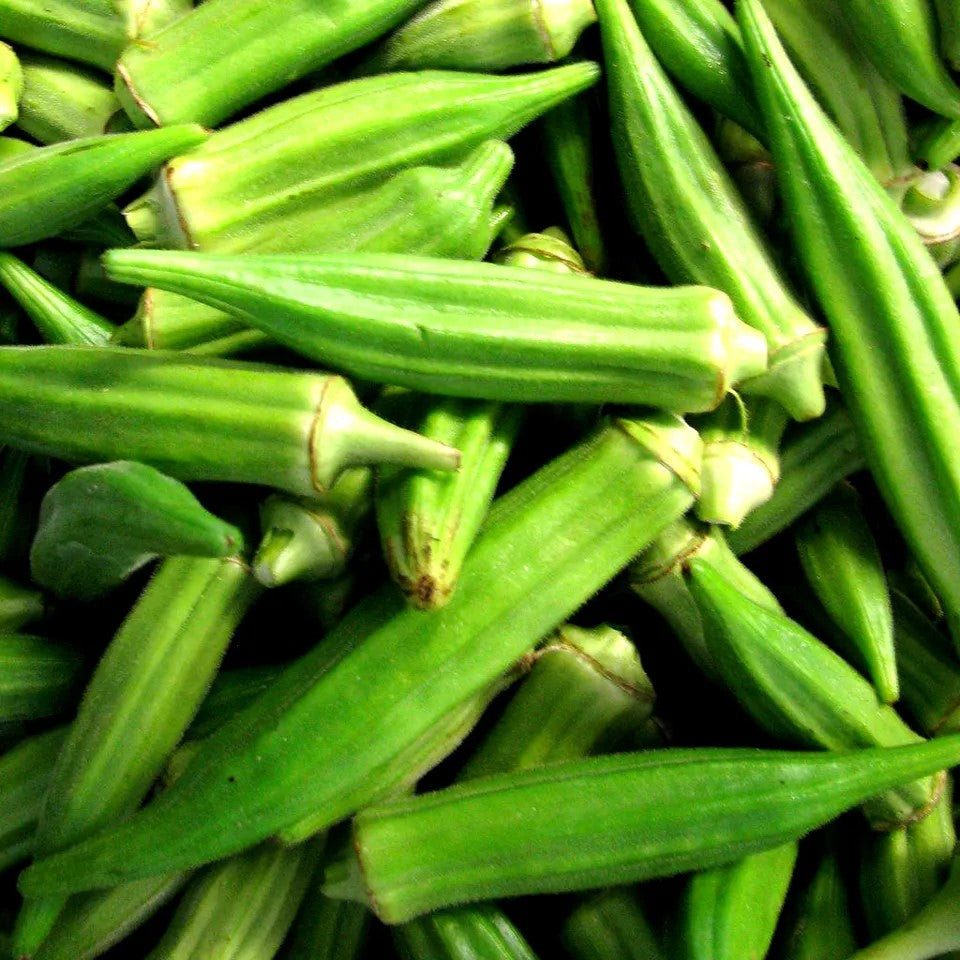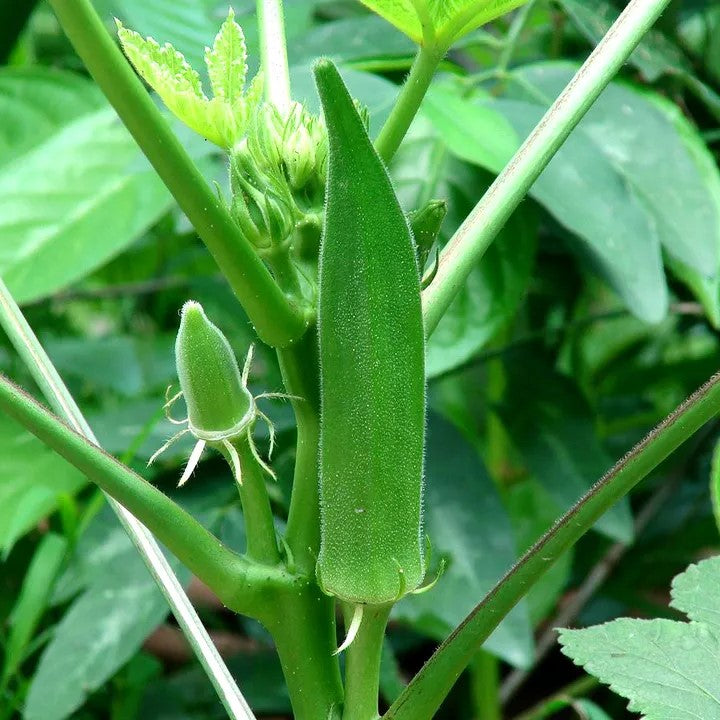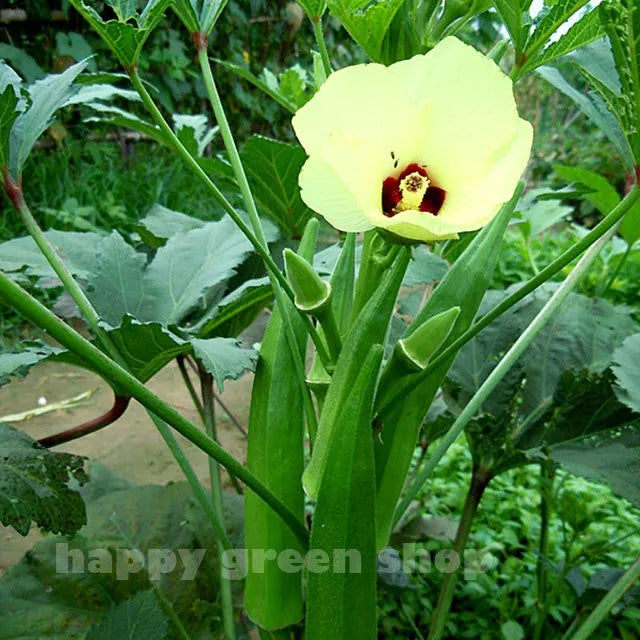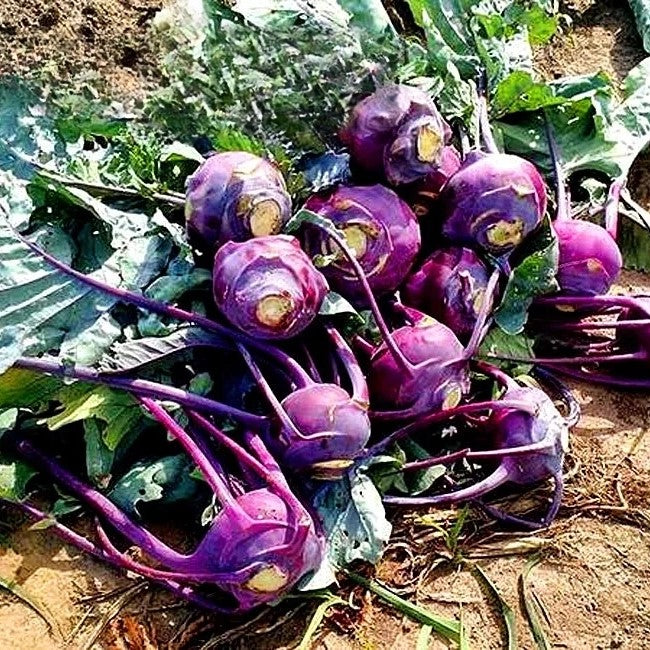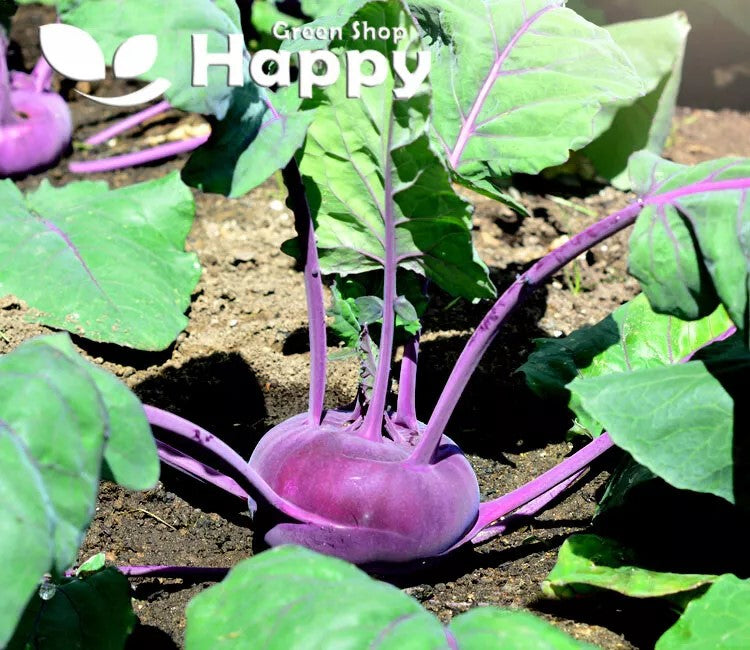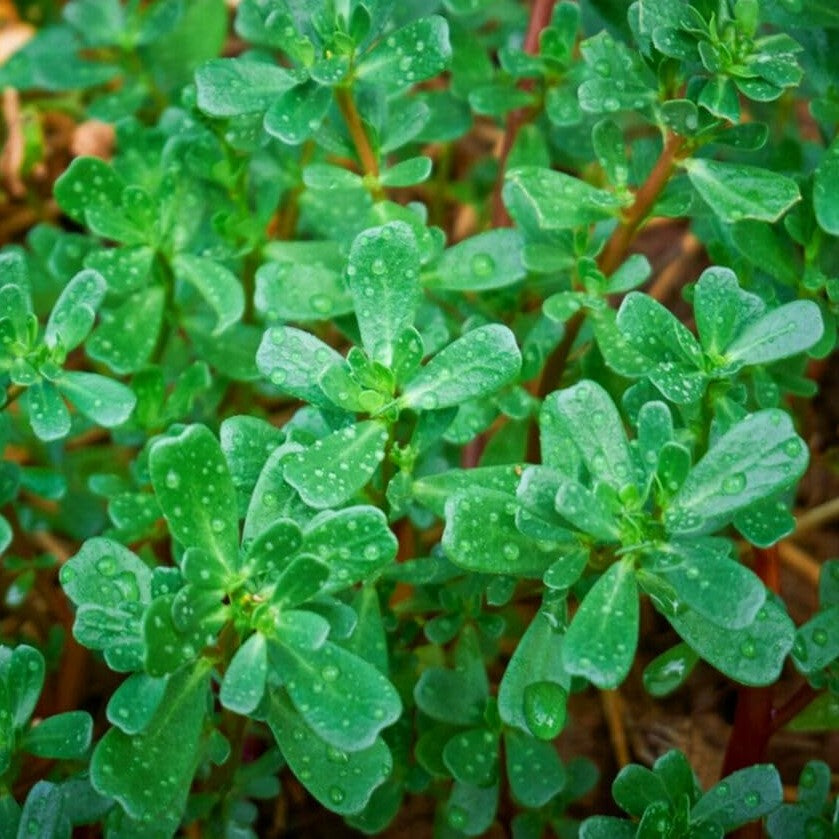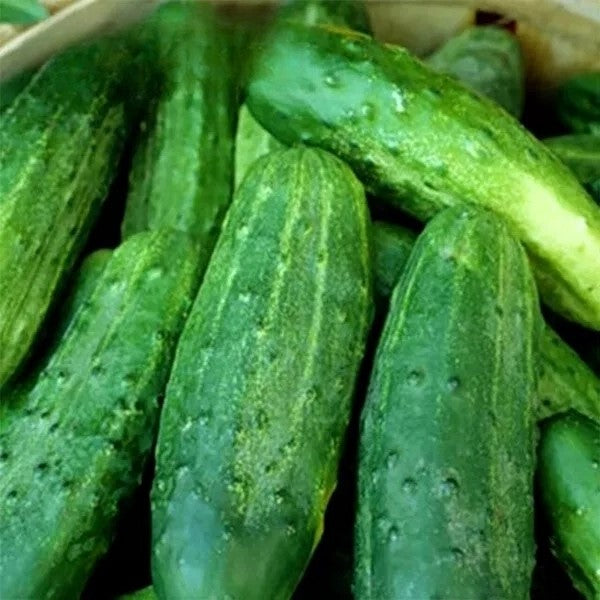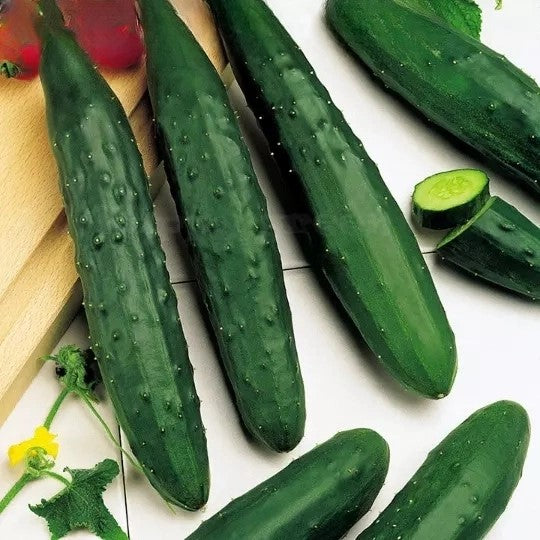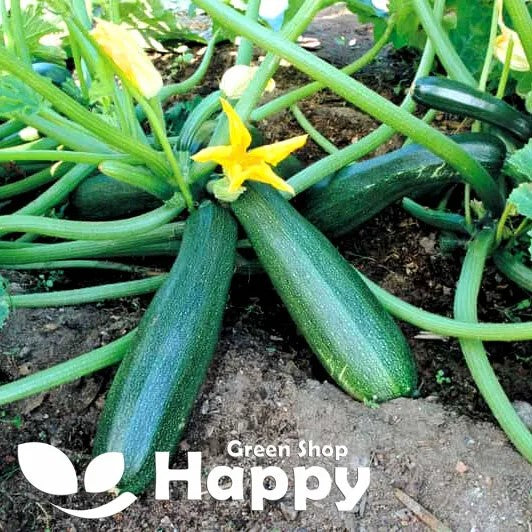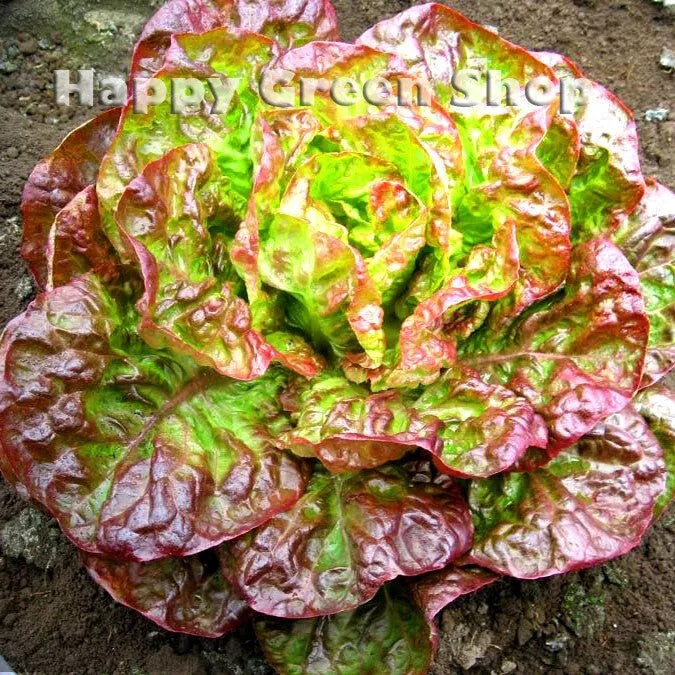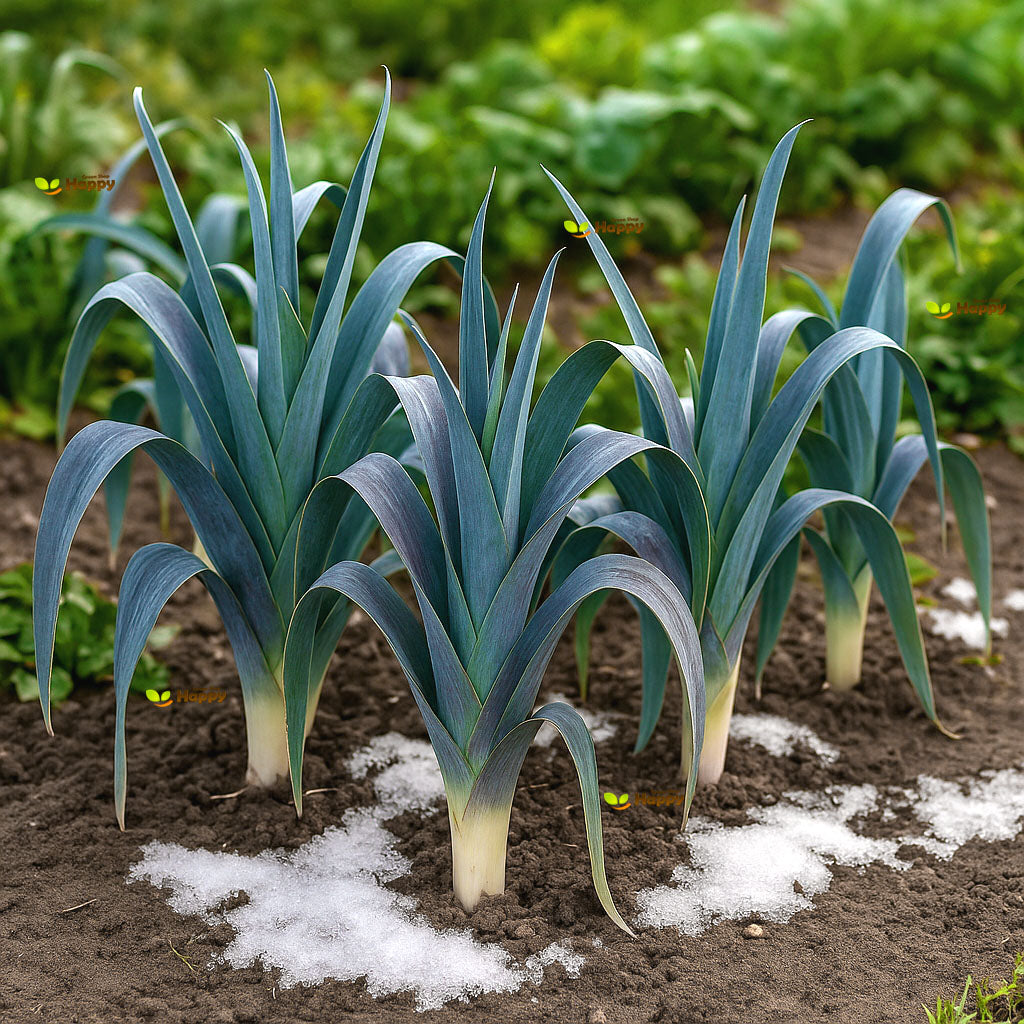Sort by:
25 products
25 products
Parsley Hamburg 'Alba' – Seeds (Petroselinum crispum)
Parsley Hamburg 'Alba' is a dual-purpose variety grown both for its large, white, parsnip-like roots and its flavorful parsley leaves. The roots are excellent roasted, boiled, or grated raw into salads, while the leaves can be used fresh as a garnish or in cooking. A versatile and easy-to-grow addition to the kitchen garden.
How to Grow
-
Sow outdoors: March – July, directly into well-prepared soil.
-
Thin seedlings to 15 cm apart in rows 30 cm apart.
-
Prefers fertile, light, well-drained soil.
-
Water regularly for strong root development.
Key Features
-
Root parsley variety with sweet, nutty flavor
-
Dual-purpose: edible roots & aromatic leaves
-
Easy to grow and hardy in most soils
-
Stores well after harvest
-
Great for soups, stews, roasting, and garnishing
Ideal For
-
Root vegetable dishes
-
Fresh parsley leaves for cooking
-
Kitchen gardens and allotments
Sowing & Harvest
-
Sow: March – July
-
Harvest: October – December
Quick Tip
For the best roots, loosen soil well before sowing to allow long, straight growth.
Okra 'Clemson Spineless' – Seeds (Abelmoschus esculentus)
Okra 'Clemson Spineless' is the most popular and widely grown okra variety, prized for its tender, spineless green pods and high yields. A warm-season crop, it thrives in sunny conditions and produces long, slim pods that are perfect for frying, grilling, soups, curries, and traditional gumbo dishes. Compact and productive, it’s ideal for home gardens or allotments.
How to Grow
-
Sow indoors: March – May in pots or modules with heat.
-
Transplant outdoors: After last frost when soil has warmed.
-
Soil: Fertile, well-drained soil in full sun.
-
Spacing: 30–45 cm apart.
-
Water regularly during dry spells to encourage pod production.
Key Features
-
Famous spineless okra variety
-
High-yielding and fast-growing
-
Tender, slim pods with rich flavor
-
Heat-loving annual for summer harvests
-
Perfect for gumbo, curries, soups, and frying
Ideal For
-
Kitchen gardens and allotments
-
Sunny, sheltered growing positions
-
Gardeners who enjoy exotic vegetables
Sowing & Harvest
-
Sow: March – May
-
Harvest: July – October
Quick Tip
Harvest pods when young (7–10 cm long) for the best flavor and tenderness. Picking regularly encourages further production.
Kohlrabi 'Violeta' – Seeds (Brassica oleracea)
Kohlrabi 'Violeta' is a striking purple-skinned variety with crisp, white flesh and a sweet, nutty taste. Its unique color and mild flavor make it an excellent addition to both the garden and the kitchen. Perfect eaten raw in salads, grated into slaws, or lightly cooked in stir-fries, soups, and roasts.
This fast-growing crop is hardy, reliable, and suitable for multiple sowings throughout the season. Compact plants make it an ideal choice for small gardens, raised beds, or containers.
How to Grow
-
Sow indoors/outdoors: March – July
-
Depth: 1 cm
-
Spacing: 20–25 cm between plants, 30 cm between rows
-
Position: Full sun or partial shade
-
Soil: Moist, fertile, well-drained soil
-
Watering: Keep soil evenly moist to prevent woodiness and splitting
Key Features
-
Vibrant purple variety with sweet, crisp white flesh
-
Delicious raw or cooked – versatile in salads, stir-fries, and roasts
-
Fast-growing and suitable for repeat sowings
-
Compact plants – ideal for small gardens and containers
-
Attractive crop with ornamental value in the vegetable patch
Harvest
-
Harvesting period: May – October
-
Pick when bulbs reach 5–8 cm in diameter for the best flavor and texture.
Short Tip
For tender bulbs, avoid letting plants become oversized – harvest regularly.
Green Purslane – Seeds
(Portulaca oleracea sativa)
Green Purslane is a fast-growing, highly nutritious leafy vegetable known for its crisp texture and slightly tangy, lemony flavor. Packed with omega-3 fatty acids, vitamins, and minerals, it’s a popular choice for fresh salads, smoothies, soups, and stir-fries. This hardy annual thrives in warm, sunny spots and poor soils, making it an easy-to-grow, low-maintenance crop.
Why Grow Green Purslane?
-
Nutritious superfood rich in omega-3s & antioxidants
-
Succulent leaves with a refreshing, tangy taste
-
Quick-growing and drought-tolerant
-
Versatile in the kitchen: salads, soups, smoothies & sautés
Key Features
-
Type: Annual herb/leafy vegetable
-
Height: 15–30 cm
-
Harvest: 6–8 weeks from sowing
-
Position: Full sun
-
Soil: Well-drained, sandy or poor soils tolerated
Ideal For
-
Kitchen & herb gardens
-
Containers and small spaces
-
Healthy cooking & raw food diets
-
Easy, low-maintenance cultivation
Sowing & Growing
-
Sow outdoors: April–July, directly in soil after frost risk has passed
-
Sow thinly and cover lightly with soil
-
Germination: 7–14 days at 18–22°C
-
Thin seedlings to 15 cm apart
-
Harvest leaves regularly to encourage fresh growth
Cucumber 'Marketmore' – Seeds (Cucumis sativus)
Cucumber 'Marketmore' is a classic, reliable outdoor cucumber variety producing dark green, smooth-skinned fruits with crisp texture and excellent flavor. Highly productive and resistant to common diseases, it is perfect for slicing, salads, and fresh eating. Vigorous and easy to grow, ‘Marketmore’ is a favorite among both beginners and experienced gardeners.
How to Grow
-
Sow indoors: April – May in pots or trays.
-
Transplant outdoors: After last frost into a sunny, sheltered spot.
-
Sow direct outdoors: May – June, once soil is warm.
-
Spacing: 45–60 cm apart in rows or beds.
-
Provide regular watering and mulch to keep soil moist.
Key Features
-
Classic slicing cucumber variety
-
Smooth, dark green, uniform fruits
-
Crisp, refreshing flavor
-
Heavy cropping and reliable yields
-
Resistant to common cucumber diseases
Ideal For
-
Outdoor vegetable plots and raised beds
-
Fresh summer salads and sandwiches
-
Gardeners seeking a tried-and-true cucumber variety
Sowing & Harvest
-
Sow: April – June
-
Harvest: July – September
Quick Tip
Pick fruits regularly to encourage continuous production. Avoid letting cucumbers grow too large for the best taste and texture.
Courgette 'Astra Polka' Seeds (Cucurbita pepo)
Add a splash of color to your vegetable patch with Courgette 'Astra Polka', a prolific and compact variety producing golden-yellow fruits. This reliable courgette has a mild, sweet flavor and tender flesh, making it perfect for grilling, stir-fries, or summer salads. Its vibrant fruits stand out both in the garden and the kitchen.
How to Grow
-
Sow indoors in April–May or directly outdoors after frost.
-
Use rich, well-drained soil in full sun.
-
Sow 2–3 seeds 2 cm deep in pots or stations.
-
Thin to one strong plant per station, spacing 60–80 cm apart.
-
Harvest young fruits regularly to encourage continuous production.
Key Features
-
Compact, high-yielding variety
-
Attractive golden-yellow courgettes
-
Mild, sweet flavor with tender texture
-
Perfect for grilling, roasting, stir-fries, and salads
-
Heavy and reliable cropper all season
Ideal For
-
Home gardeners with limited space
-
Garden-to-table cooking
-
Summer dishes and fresh eating
-
Adding color to both plate and harvest basket
Sowing
-
Best time: April to June
-
Depth: 2 cm
-
Spacing: 60–80 cm between plants
-
Position: Full sun, fertile soil
-
Harvest: From July onwards
Quick Tip
-
Pick fruits when small (10–15 cm) for the best flavor and to keep plants producing abundantly.
Batavian Lettuce 'Canasta' – Seeds (Lactuca sativa)
Enjoy crisp and tender leaves with Batavian Lettuce 'Canasta', a traditional variety known for its red-tinted, crinkled heads and excellent bolt resistance. This semi-heading lettuce produces large, crunchy leaves with a mild, sweet flavor, perfect for fresh salads or as a base for summer dishes. Hardy and versatile, 'Canasta' thrives even in warmer weather, making it a reliable choice for gardeners.
How to Grow
. Sow indoors from February to April or directly outdoors from March to July
. Sow thinly, 0.5 cm deep, in rows 25–30 cm apart
. Thin seedlings to 20–25 cm apart to allow full head development
. Prefers full sun and fertile, well-drained soil
. Water consistently to prevent bitterness and promote tender leaves
Key Features
. Traditional Batavian lettuce with semi-heading form
. Large, crisp leaves with red-tinged edges
. Mild, sweet flavor perfect for fresh salads
. Excellent bolt resistance in warm conditions
. Easy to grow and high yielding
Ideal For
. Summer salads and fresh eating
. Home gardens and allotments
. Gardeners seeking heat-tolerant lettuce
. Companion planting in vegetable beds
Sowing & Harvest
. Sow: February – July
. Harvest: May – September
Quick Tip
Harvest outer leaves regularly to encourage continuous growth, or allow full heads to form for a crunchy centerpiece lettuce.
Showing 25/25


